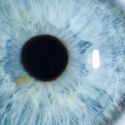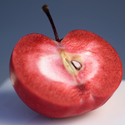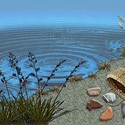Scientists at AgResearch have generated transgenic cows that produce therapeutic proteins in their milk. Here, we explain the advantages and disadvantages of using transgenic1 technologies to produce proteins.
What are therapeutic proteins?
Therapeutic proteins are used to treat human diseases2. They include hormones3, antibodies, vaccines, growth factors and blood clotting factors.
Making therapeutic proteins
Therapeutic proteins are usually synthesised in cell-based systems. In these systems, the desired gene is added to a cell, and the cell’s own machinery makes the protein. The 4 systems currently used to make therapeutic proteins are:
- microorganisms4, for example, yeast bacteria or fungi5
- plants
- mammalian cells
- transgenic animals.
The cell-based system used for making a particular therapeutic protein6 depends upon the size and structure of the protein, as well as the amount of protein required.
Small, simple proteins (like insulin, human growth hormone and interferon) are usually produced in genetically engineered microorganisms. Human insulin7, for example, is a small protein consisting of 51 amino acids8. Human insulin was first made synthetically in the bacteria9 E. coli in the late 1970s. It was approved by the USA Federal Drug Administration (FDA) in 1982 and has been available for diabetics since that time.
Larger, more complex proteins (like antibodies) are usually produced in mammalian cells. Herceptin, the breast cancer-treating antibody, is an example of a large complex protein that is synthesised in mammalian cell10 culture. To produce this protein, mammalian cells are grown in large sterile vats in nutrient-rich media under strict manufacturing standards. This type of production can be expensive to set up and maintain, making the end product costly. For example, the Herceptin antibody11 is expensive, with a 12-month course costing up to NZ$100,000.
The number of therapeutic proteins being developed by the biomedical industry is growing rapidly, and some scientists are predicting that demand for proteins will soon exceed their ability to supply them. Transgenic animals could provide an alternative source of therapeutic proteins to help meet these demands.
Biopharming
Producing therapeutic proteins in transgenic farm animals is sometimes called ‘biopharming’. Currently, research groups around the world are investigating whether transgenic animals such as goats, cattle, pigs, rabbits and chickens can be used to produce therapeutic proteins. The animals are used as sterile12 bioreactors to produce large, complex proteins or proteins that can’t be made in other cell systems.
Making therapeutic proteins in transgenic cows
Scientists at AgResearch have generated transgenic cows that produce myelin basic protein (MBP) in their milk. MBP is part of the insulating layer that surrounds nerves. In patients with multiple sclerosis, this insulating layer is gradually destroyed, which prevents the nerves from communicating. Treatment with human MBP may help reduce symptoms of multiple sclerosis13.
In a 2018 update, Dr Goetz Laible noted that funding for AgResearch’s biomedical14 research projects had finished. Dr Laible’s colleague, Medhat Al-Ghobashy, is continuing with the research at Cairo University. In a paper published in 2017, Dr Al-Ghobashy reports that rhMBP from transgenic cow milk may have potential as a vaccine15 for MS. The research used mice and is still in preclinical applications.
Advantages and disadvantages of making proteins in cows
Dairy cows produce large amounts of protein naturally in their milk. Their protein-making machinery makes an excellent ‘biofactory’.
The main advantages of making therapeutic proteins in transgenic cows are:
- capacity – large amounts of protein are produced – the average dairy cow can produce more therapeutic proteins (about 5–10g/L) than mammalian cells in culture16 (about 1g/L)
- cost – transgenesis is cheaper than mammalian cell culture
- scale – it is easy to scale production up or down to meet demand
- function – proteins are folded and fully functional
- harvesting – proteins can readily be purified from milk.
The main disadvantages of making therapeutic proteins in cows are:
- it takes a long time to generate and validate17 transgenic cows
- proteins can’t be harvested until lactation begins
- the transgene may affect the cow, for example, as the transgene18 inserts randomly into a chromosome, it may disrupt a gene19 required for an important function.
The first international biopharming success
In June 2006, the first human therapeutic protein made in a transgenic animal was approved for use in Europe and the USA. ATryn®, an antithrombin, is made in transgenic goats. It is used to prevent blood clots in patients with a rare blood disease20. A relatively small herd of goats (about 80) can produce enough protein to supply all of Europe.
Transgenic research in New Zealand
In April 2010, AgResearch was granted approval from ERMA (the Environmental Risk Management Authority) to continue developing transgenic animals, including goats, sheep and cattle that produce therapeutic proteins in their milk. In its 2017 report to the EPA, AgResearch noted that it had approximately 90 transgenic cows and goats in its containment farm.
Useful links
Making human insulin is a resource for schools with an animation showing how insulin is made, from APBI Resources for Schools, UK.
Read about Dr Goetz Liable and his team's work to knock down beta-lactoglobulin (BLG), a milk whey protein known to be allergenic, in this 2017 New Zealand Herald article.
- transgenic: An organism (plant, animal, bacterium or virus) whose genome has been changed using genetic material from a different species.
- diseases: 1. An abnormal condition of an organism that impairs bodily functions. 2. In plants, an abnormal condition that interferes with vital physiological processes.
- hormone: A chemical substance secreted by an endocrine gland into the bloodstream. It acts on specific target cells to produce a given response to control and regulate the activity of certain cells or organs.
- microorganism: A living organism which is too small to be seen with the naked eye and can only be observed using a microscope. Includes bacteria and most protists.
- fungi: The Fungi are a kingdom separate from plants and animals. Like animals, a fungus (or fungi – plural) is an organism that cannot make its own food. It can be multicellular such as mushrooms and moulds, or unicellular such as yeasts. Fungi may be decomposers, parasites, or mutualists (helping plants to grow).
- protein: Any of a large class of complex compounds that are essential for life. Proteins play a central role in biological processes and form the basis of living tissues. They have distinct and varied three-dimensional structures. Enzymes, antibodies and haemoglobin are examples of proteins.
- insulin: A hormone produced in the pancreas that controls blood sugar levels.
- amino acid: The basic building block of proteins. A short chain of amino acids is called a peptide, and a long chain of amino acids (normally more than 50) is called a protein.
- bacteria: (Singular: bacterium) Single-celled microorganisms that have no nucleus.
- cell: 1. Building block of the body. A human is made of millions of cells, which are adapted for different functions and can reproduce themselves exactly. 2. A simple electrolytic device that enables chemical energy to be transformed into electrical energy.
- antibody: A protein that attaches to and then destroys or neutralises harmful foreign substances in the body. Part of the immune system.
- sterile: Free from contaminating organisms, like bacteria or viruses, that may transmit disease.
- Multiple sclerosis (MS): An autoimmune disease where a person’s immune system gradually destroys myelin, the substance that forms a protective coat around nerve cells and disrupts signalling in the brain and spinal cord.
- biomedical: Using biological science for medical developments.
- vaccine: A substance that improves immunity to a particular disease. The vaccine stimulates the body’s immune system so that it can more easily recognise and destroy a particular microorganism that it later encounters.
- culture: 1. A group of living cells growing in a controlled, artificial environment like a laboratory. 2. The ideas, customs and social behaviour of a particular people or society.
- validate: To prove something is accurate. With remote sensing, it is a comparison of data obtained via satellite or other imaging with data collected by conventional means.
- transgene: A gene that has been integrated into the genome of a recipient organism.
- genes: A segment of a DNA molecule that carries the information needed to make a specific protein. Genes determine the traits (phenotype) of the individual.
- diseases: 1. An abnormal condition of an organism that impairs bodily functions. 2. In plants, an abnormal condition that interferes with vital physiological processes.







